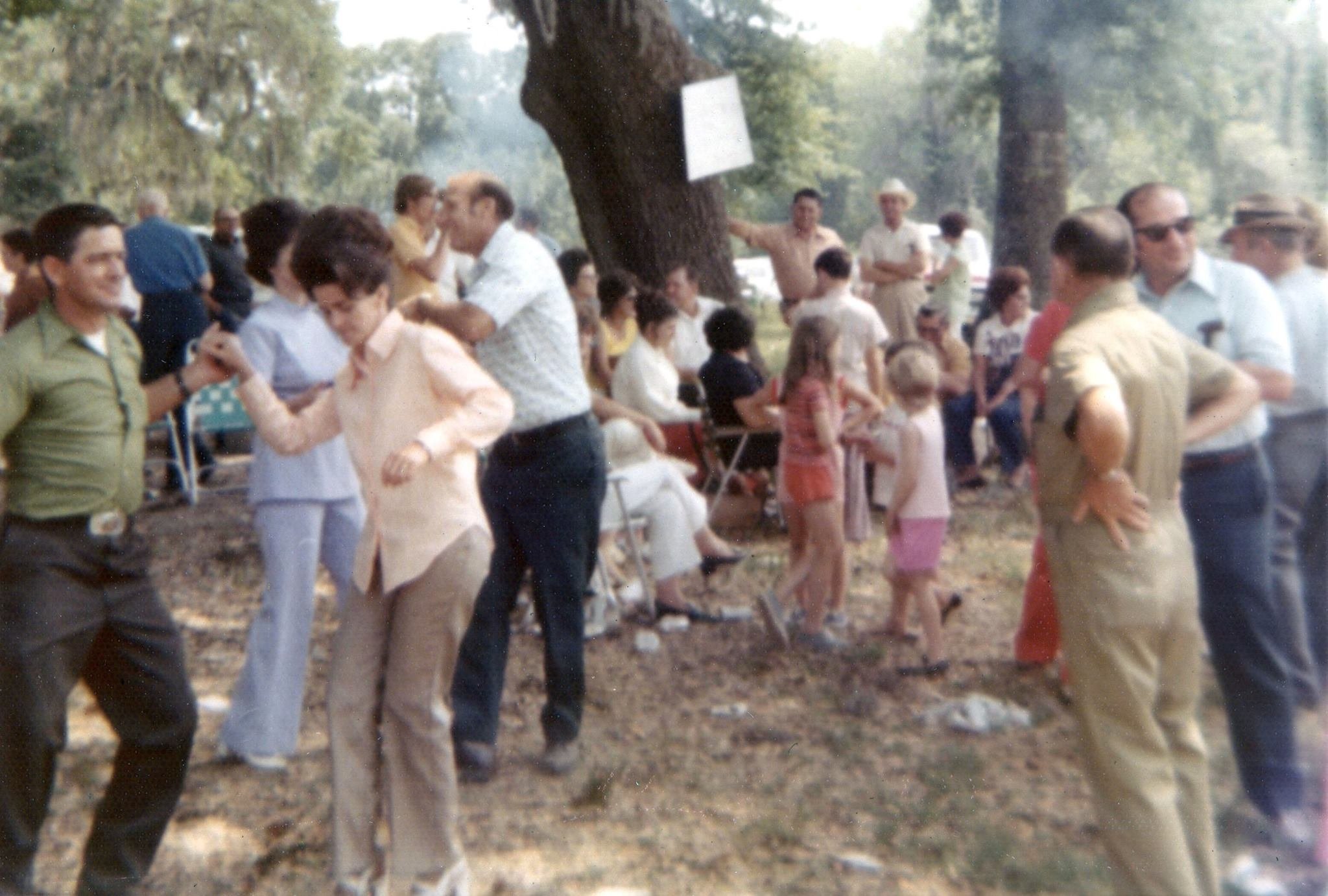St. Rita Church Fair
Dancing to a Cajun band at Clayton Boudreaux Memorial Park in Catahoula
In 1982 archaeologist Dr. Jon L. Gibson, coordinating a team of scholars, put together a comprehensive report on the cultural resources of the Atchafalaya Basin after extensive fieldwork in the area. The report, Archaeology and Ethnology on the Edges of the Atchafalaya Basin, featured a description of the St. Rita Church Fair in Catahoula, which is excerpted below. Photographs of the church fair have been sourced by me from residents of Catahoula.
Church Fair Cakes—1952
The fete de benefice held in Catahoula on September 15-16, 1979 was named the St. Rita Church Fair because the money collected at this annual affair is donated to the church. It should be mentioned that not all of this money was not intended for St. Rita Church exclusively. Informants explained that it was an offering to the entire Catholic diocese, world missions, and the Pope himself, and that the people of Catahoula did not expect the money to be used within the community.
Preparing z’oreilles d’cochon for the Church Fair
The money was collected through the sale of beer, gaspergoo courtboullion and various other foods and beverages. A pirogue race, a volleyball tournament, and bingo games also brought in money. A benefit auction was held in which hand-made pirogue paddles, elaborately decorated cakes, and other donated items were bought, redonated, and bought again. All of this was accomplished to the tunes of a Cajun accordian band who donated their services tout gratis. As a social institution, fetes des benefices represent a peculiarly Cajun system of wealth redistribution.
Preparing food for the Church Fair—1972
When any urgent need arises within the community; i.e., individuals faced with high hospital or doctor bills, houses lost by fire, etc., this system of redistribution funnels money, goods, or services into the hands of the needy. When the Bayou Benoit residents were evicted from their levee homes, the residents of Catahoula held a benefit to help them resettle.
Pirogue race in Catahoula Lake
One of the highlights of the St. Rita Church Fair in Catahoula was the “sacrificing of a maiden.” The ceremony supposedly reenacted a ritual sacrifice practiced years ago by Indians who believed Catahoula Lake to be sacred. Dressed in Indian costume, the young Cajun girl was carried by pirogue to a platform stationed in the middle of the lake, whereupon she ceremoniously plunged into the waters and hid under the platform. The observers on the bank were left mumbling in French that surely she had drowned.




